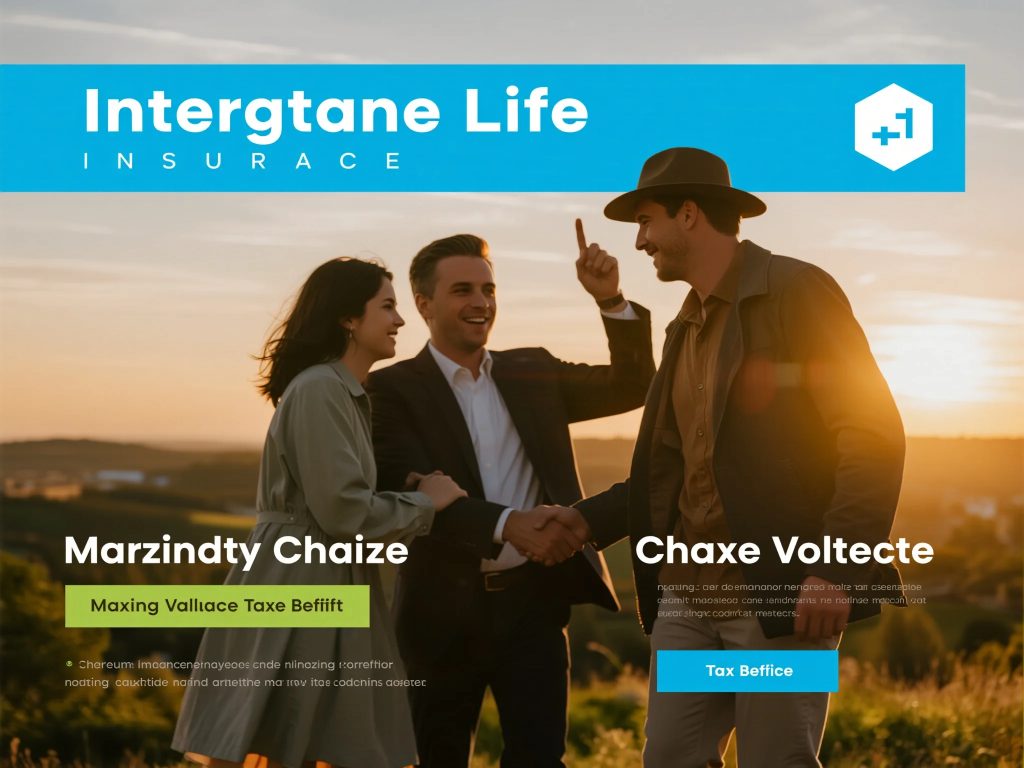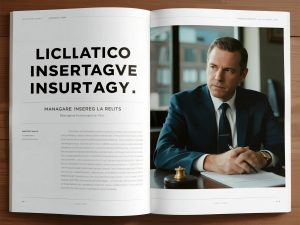Strategic Indexed Universal Life Insurance for Maximum Cash Value Accumulation The financial landscape for wealth preservation has undergone significant transformation in recent years, with sophisticated indexed universal life insurance strategies emerging as powerful tools for comprehensive financial planning. These specialized insurance solutions represent a unique blend
of protection and investment opportunities, offering policyholders the potential for market-linked growth while providing essential downside protection mechanisms. The fundamental appeal of these advanced insurance products lies in their ability to combine the death benefit security of traditional life insurance with the growth potential of equity markets, all within a tax-advantaged framework. Families and individuals seeking to optimize their financial positioning increasingly recognize the value of these hybrid solutions that address both immediate protection needs and long-term wealth accumulation objectives. The flexibility and customization available through modern indexed universal life policies allow for tailored approaches that align with specific financial goals, risk tolerance levels, and time horizons.Modern indexed universal life insurance contracts distinguish themselves through their innovative structure that links cash value growth to the performance of major market indices while establishing protective floors that limit potential losses. This unique combination of growth opportunity and capital preservation addresses a critical need in financial planning – the
ability to participate in market gains without exposure to full market risk. The mechanics of these policies involve premium allocations that fund both insurance coverage and cash value components, with the investment portion credited interest based on the performance of selected indices subject to predetermined caps and participation rates. Insurance carriers specializing in these products have developed increasingly sophisticated indexing strategies that offer policyholders various options for balancing growth potential with risk management. The transparency of these indexing mechanisms, with clear formulas for interest crediting, appeals to financially savvy individuals who prefer understanding exactly how their returns are calculated. The ongoing evolution of indexed universal life products continues to enhance their attractiveness as components of comprehensive wealth management strategies.High-Value Life Insurance Solutions for Comprehensive Financial Protection
Sophisticated high-value life insurance USA offerings have become essential components of estate planning and wealth transfer strategies for affluent families and business owners. These specialized insurance products transcend basic protection concepts to serve as strategic financial instruments that address complex planning needs. The substantial death benefits provided by these policies offer crucial liquidity for estate tax obligations, business succession requirements, and wealth equalization among heirs. The underwriting process for high-value life insurance involves comprehensive financial analysis that goes beyond traditional medical evaluation to consider the complete financial picture of applicants. Insurance carriers specializing in this market segment employ teams of experts who understand the nuances of high-net-worth financial situations, including complex ownership structures, international asset holdings, and sophisticated estate planning arrangements. The customization available through these specialized products allows families to tailor coverage to their specific circumstances, whether the primary objective involves estate tax liquidity, charitable giving strategies, or multi-generational wealth transfer.
The implementation of high-value life insurance USA strategies requires careful coordination with broader financial and estate plans to maximize effectiveness and efficiency. These policies are often held within irrevocable life insurance trusts (ILITs) to remove the death benefit from taxable estates, creating a powerful wealth transfer mechanism that bypasses probate and provides immediate liquidity to beneficiaries. The premium commitments for these substantial policies represent strategic allocations within overall wealth preservation plans, with careful consideration given to premium financing options, payment structures, and policy design features. The tax advantages of life insurance, including income-tax-free death benefits and potential estate tax exclusion, make these strategies particularly efficient compared to alternative wealth transfer mechanisms. The certainty provided by insurance benefits offers peace of mind in estate planning that other assets cannot match, allowing families to make definitive plans with confidence in the available resources. When properly structured and integrated with comprehensive financial planning, high-value life insurance becomes an indispensable tool for achieving multiple objectives simultaneously, from wealth preservation and tax efficiency to legacy creation and business continuity.
Whole Life Insurance Strategies for Sustainable Wealth Building
Traditional whole life insurance for wealth accumulation remains a cornerstone of conservative financial planning strategies, offering guaranteed benefits, predictable premium structures, and steady cash value growth. These permanent insurance policies provide a foundation of financial security that complements more aggressive investment strategies within comprehensive wealth management frameworks. The fundamental appeal of whole life insurance in wealth building contexts lies in its combination of protection and guaranteed growth elements within a tax-advantaged structure. The cash value component grows at conservative but predictable rates, with dividends from participating policies potentially enhancing overall returns. The guaranteed nature of policy benefits provides certainty in financial planning, which is especially valuable during periods of market volatility or economic uncertainty. The tax-deferred growth of cash values allows policyholders to accumulate wealth without annual tax implications, while policy loans and withdrawals provide access to funds during lifetime without triggering taxable events.
The strategic implementation of whole life insurance for wealth building involves careful consideration of policy design, premium allocation, and integration with broader financial objectives. These policies are particularly valuable for the portion of a wealth accumulation strategy dedicated to capital protection rather than aggressive growth. The guaranteed death benefit provides essential protection for families and businesses, while the cash value accumulation offers a conservative savings component that can serve as a financial safety net. The loan provision features of whole life policies provide flexibility for opportunities or emergencies without the need to liquidate other investments, potentially avoiding taxable events or market timing issues. The use of these policies within retirement income planning allows for tax-efficient income streams through policy loans that are not considered taxable income. The predictability and reliability of whole life insurance make it particularly suitable for long-term planning objectives where certainty outweighs the potential for higher but uncertain returns from more volatile investments. When used as part of a diversified financial strategy, whole life insurance contributes stability and guarantees that balance the risk characteristics of other investment holdings.

Variable Universal Life Insurance for Flexible Investment Opportunities
Sophisticated variable universal life insurance products offer policyholders unprecedented investment flexibility within the framework of permanent life insurance protection. These advanced insurance contracts combine death benefit coverage with the opportunity to allocate cash values among various investment options, typically including mutual fund subaccounts covering different asset classes and investment strategies. The fundamental distinction of variable universal life insurance lies in its direct market participation feature, where policyholders assume investment risk in exchange for potentially higher returns compared to fixed or indexed alternatives. The appeal of these products for wealth accumulation strategies centers on their ability to provide tax-advantaged growth potential through a wide range of investment choices that can be tailored to individual risk tolerance levels and financial objectives. The flexibility to adjust investment allocations over time allows policyholders to respond to changing market conditions, personal circumstances, and financial goals without needing to establish new insurance contracts.
The implementation of variable universal life insurance strategies requires careful consideration of investment objectives, risk management approaches, and policy costs. These products typically involve higher fees than other life insurance options due to the investment management components and administrative complexities. Policyholders benefit from the expertise of professional investment managers while maintaining the tax advantages of life insurance, including tax-deferred cash value growth and income-tax-free death benefits. The transparency of investment options, with daily valuation and clear performance reporting, appeals to investors who prefer direct control over their investment allocations. The ability to rebalance investment portfolios within the policy framework provides risk management opportunities that can enhance long-term returns while maintaining the insurance protection foundation. The loan and withdrawal features of variable universal life policies offer access to accumulated values for opportunities or needs during lifetime, with careful planning required to avoid policy lapse and potential tax consequences. When used within comprehensive financial plans, variable universal life insurance can serve as both protection vehicle and investment platform that complements other retirement and wealth accumulation strategies.
Retirement Annuities with High Payout Strategies for Secure Income
Strategic retirement annuities high payout solutions have become increasingly important components of retirement income planning, particularly as longevity risks and market volatility concerns influence retirement preparedness. These insurance products offer guaranteed income streams that cannot be outlived, providing essential protection against the risk of depleting retirement savings. The fundamental appeal of high-payout annuities lies in their ability to convert accumulated assets into predictable income that supports retirement lifestyle needs regardless of market conditions or economic uncertainties. The insurance mechanism behind annuities allows for pooling of longevity risk, enabling insurance companies to offer higher payout rates than individuals could safely achieve through systematic withdrawal strategies from investment portfolios. The certainty provided by annuity income streams complements other retirement income sources, creating a layered approach to retirement funding that addresses both essential expenses and discretionary spending needs.
The selection and implementation of retirement annuities high payout strategies require careful analysis of individual circumstances, including life expectancy considerations, income needs, risk tolerance, and existing retirement assets. Immediate annuities provide income payments that begin shortly after purchase, offering the highest payout rates for given ages and payment options. Deferred annuities allow for accumulation periods before income payments begin, with potential for higher overall benefits through longer deferral periods. Fixed annuities offer guaranteed payout amounts that provide budgeting certainty, while variable annuities offer potential for increasing payments linked to investment performance. Indexed annuities provide a middle ground with participation in market gains subject to caps while protecting against losses. The tax treatment of annuity payments depends on the funding source, with non-qualified annuities providing tax-favored recovery of basis while qualified annuities offer fully taxable payments. The integration of annuities with other retirement income sources, including Social Security, pensions, and investment portfolio withdrawals, creates comprehensive retirement income plans that address both predictable needs and flexible spending requirements. The psychological benefits of guaranteed income, including reduced anxiety about market fluctuations and longevity risk, contribute significantly to retirement satisfaction and financial peace of mind.
Integrated Wealth Management with Insurance Solutions
The comprehensive integration of indexed universal life insurance with other financial products creates synergistic wealth management strategies that address multiple objectives simultaneously. These integrated approaches recognize that effective financial planning requires coordination across protection, accumulation, tax efficiency, and legacy planning dimensions. The combination of life insurance with investment accounts, retirement plans, and estate planning vehicles allows for optimized asset location strategies that maximize after-tax returns and wealth preservation. The tax advantages of life insurance products, particularly their ability to provide tax-free death benefits and tax-deferred cash value growth, make them valuable components of overall tax planning strategies. The flexibility of universal life insurance products, with adjustable premium payments and death benefit options, allows for adaptation to changing financial circumstances without needing to establish new policies or incur additional costs.
The strategic implementation of integrated wealth management involving high-value life insurance USA solutions requires professional guidance from financial advisors, insurance specialists, and tax professionals who understand the complexities of these strategies. The coordination of policy design with overall financial objectives ensures that insurance solutions complement rather than duplicate other planning elements. The use of life insurance within business planning contexts provides solutions for key person protection, buy-sell agreements, and executive compensation arrangements that address both business continuity and personal financial security needs. The retirement income planning applications of life insurance cash values offer tax-efficient income sources that can supplement other retirement assets while maintaining death benefit protection for beneficiaries. The estate planning applications of life insurance provide liquidity for tax obligations and equalization of inheritances without forcing liquidation of other valuable assets. The ongoing management of these integrated strategies involves regular review and adjustment to ensure continued alignment with changing personal circumstances, financial goals, tax laws, and economic conditions. The comprehensive nature of these approaches provides holistic financial security that addresses both immediate needs and long-term objectives through coordinated implementation of various financial products and strategies.
Future Trends in Insurance-Based Wealth Strategies
The evolution of whole life insurance for wealth accumulation and other insurance-based financial strategies continues to advance, with emerging trends shaping the future landscape of these sophisticated planning tools. Technological innovations are transforming product design, underwriting processes, and policy administration, making complex insurance solutions more accessible and manageable for consumers. The integration of artificial intelligence and data analytics enables more personalized product recommendations, enhanced risk assessment, and improved policy performance through optimized strategy selection. The growing emphasis on transparency and consumer education reflects increasing sophistication among purchasers who demand clear understanding of product features, costs, and benefits. Sustainability considerations are influencing product development, with insurance carriers incorporating environmental, social, and governance factors into investment strategies underlying cash value accumulation.
The regulatory environment continues to evolve, with changes to tax laws, insurance regulations, and financial reporting requirements influencing product design and implementation strategies. The anticipated changes to estate tax exemptions and income tax rates create both challenges and opportunities for wealth preservation planning using insurance products. The globalization of wealth has driven demand for insurance solutions that provide international portability, multi-currency options, and cross-border compatibility to serve families with assets and interests in multiple countries. The professionalization of insurance advisory services has elevated standards for client service, with specialized firms offering comprehensive solutions that integrate insurance with broader wealth management frameworks. These evolving trends ensure that insurance-based wealth strategies will continue to play essential roles in helping individuals and families protect, preserve, and transfer wealth across generations while adapting to changing economic conditions, regulatory requirements, and personal circumstances. The ongoing innovation within the insurance industry promises to deliver increasingly sophisticated solutions that address complex financial needs through personalized approaches that combine protection, accumulation, and tax efficiency within comprehensive financial plans.




